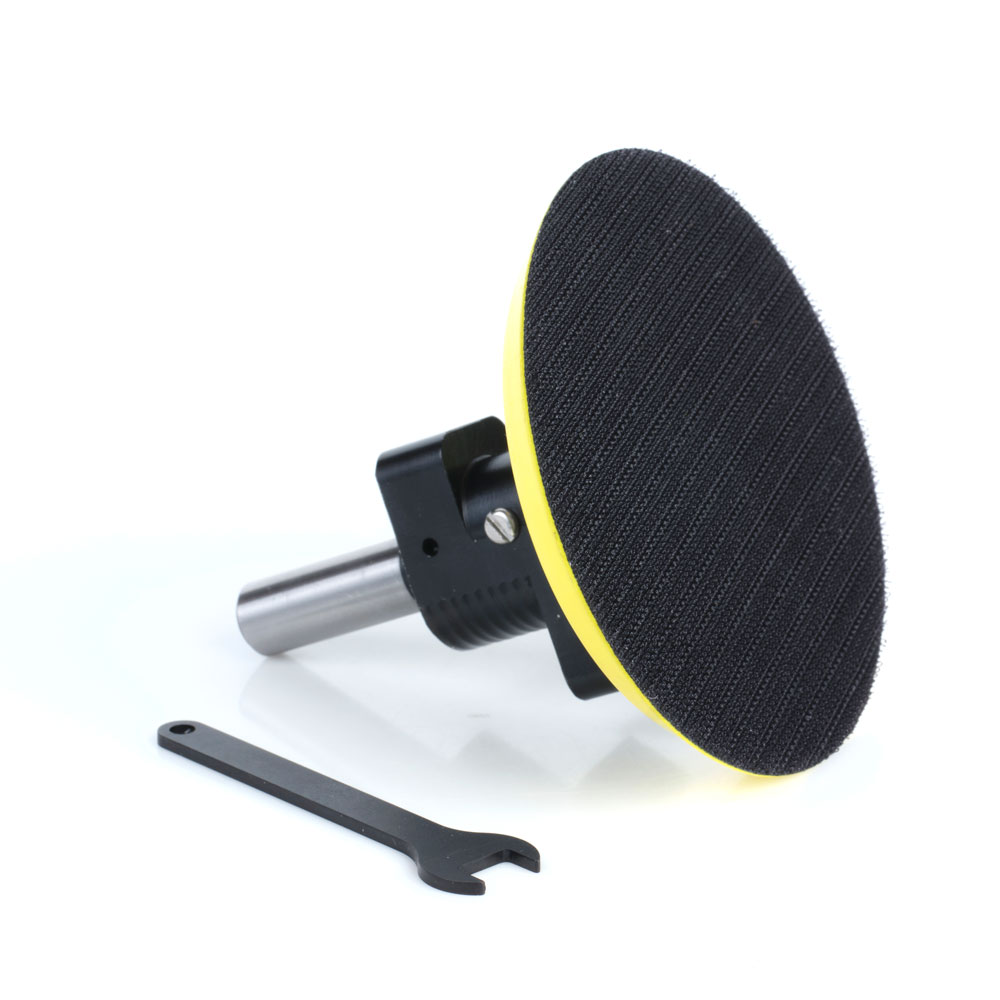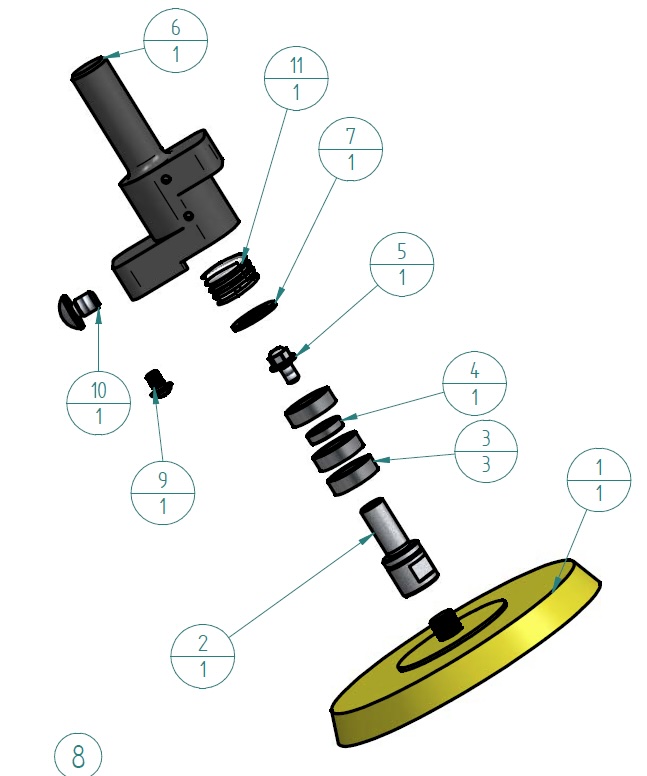Amana Tool IN-SAND™ Dynamically Balanced Non-Random Orbital CNC Sander 1/2 ShankThank you for shopping with us! WARNING! The max RPM for the 61299 Dynamically Balanced non Random Orbital Sander is 8,000. Working with higher rotation speed can cause damage to the machine spindle. Please note: After one hour of sanding, stop and turn the power off on your CNC machine. Inspect to ensure the tool spins freely. Repeat after each hour of sanding. Designed for CNC Sanding: Wood and Resin. Recommended running parameters (depending on application) 4,000 – 7,000 RPM This CNC orbital sanding tool is designed to use with any 4” sanding disc (included) according to the finish required. Full set of instructions included. UNDERSTANDING THE SANDER BEFORE USE: The In-Sand™ sander comes with two different springs; the hard spring comes installed on the tool and the soft spring is included in the package. The springs look very similar, but by compressing the springs you can feel the difference between the stiffness of them. A spring inside the sander ensures constant pressure is applied to the sanding pad. The amount of pressure is determined by setting the “depth of cut” in your software. Do not exceed the maximum spring compression by setting your cut depth too deep, for best results use our recommended settings. The hard spring applies a maximum pressure of 22lbs (10kg) with a maximum compression of 0.078″ (2mm). The recommended “depth of cut” setting is 0.04″ (1.01mm). This spring is best used for flat surfaces. The sander should not be used to flatten surfaces, the surface must already be flat before sanding. The soft spring applies a maximum pressure of 4.4lbs (2kg) with a maximum compression of 0.1″ (2.6mm). The recommended “depth of cut” setting is 0.08″ (2.03mm). This spring is best used for rough, but relatively flat surfaces. The maximum deviation in the surface cannot exceed the maximum compression of the spring. On uneven surfaces, it will follow the ups and downs of the material, which may be helpful in certain cases like using rough sawn wood where you want to smooth it out, but not remove the rough sawn look, for example. Pad Installation & Replacement 1. Hold the spindle with the key (part #6) using the flats on the spindle. The In-Sand™ is a non-random orbital sander, which operates in a fixed, predictable motion. The sander is dynamically balanced from the factory, using Part #5 as the balancing element. DO NOT ADJUST THIS PART. If the red mark on Part #5 is not aligned properly to the red mark on the tool body, please contact the Amana Tool® technical support team. Sander Use Instructions: The sander is NOT for flattening material, the material should be flat before using the sander. Maintenance Instructions & Spring Replacement After every few hours of use, it is a good idea to clean and inspect the inside of the sander to ensure proper operation. Follow the below steps. Before measuring the tool length on the CNC machine, the spindle needs to be locked to ensure an accurate measurement without the spring compressing. 10 pack of 80 grit (Medium) Knowing which grit sandpaper to use depends on the type of job and what step in the process you are in. The lower the grit numbers, the coarser the disc will be, and the higher the grit, the finer it will be. 40 grit: Coarse |





